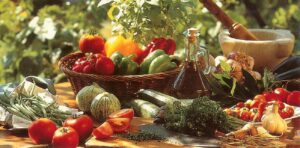 Dirty Dozen
Dirty Dozen
Buy these Organic
1. Celery
2. Peaches
3. Strawberries
4. Apples
5. Blueberries
6. Nectarines
7. Bell Peppers
8. Spinach
9. Cherries
10. Kale/Collard Greens
11. Potatoes
12. Grapes (imported)
Clean 15
Lowest in Pesticides
1. Onions
2. Avocado
3. Sweet Corn
4. Pineapple
5. Mangos
6. Sweet Peas
7. Asparagus
8. Kiwi
9. Cabbage
10. Eggplant
11. Cantaloupe
12. Watermelon
13. Grapefruit
14. Sweet Potato
15. Honeydew Melon
How Was This Guide Developed?
EWG (Environmental Working Group) analysts developed the Guide based on data from nearly 89,000 tests for pesticide residues in produce conducted between 2000 and 2008 by the U.S. Department of Agriculture and the U.S. FDA. You can find a detailed description of the criteria EWG used to develop these rankings and the complete list of fruits and vegetables tested at www.foodnews.org.
How Many Pesticides Are We Actually Consuming?
EWG research found that people who eat five fruits and vegetables a day from the “Dirty Dozen” list consume an average of 10 pesticides a day. Those who eat from the “Clean 15” fruits and vegetables ingest fewer than 2 pesticides daily. Thus, this Guide can help consumers to make informed choices in order to lower their dietary pesticide load.
Does Washing and Peeling Help?
The fruits and vegetables in these lists were tested as they are typically eaten (meaning washed, rinsed or peeled, depending on the type of produce). Rinsing reduces but does not eliminate pesticides. Peeling helps, but the skins also contain valuable nutrients and fiber. The best approach: rinse all produce thoroughly and buy organic whenever possible.
Resources
1. Environmental Working Group – www.foodnews.org
2. http://uhs.berkeley.edu/facstaff/pdf/healthmatters/EWG-shoppers-guide.pdf

